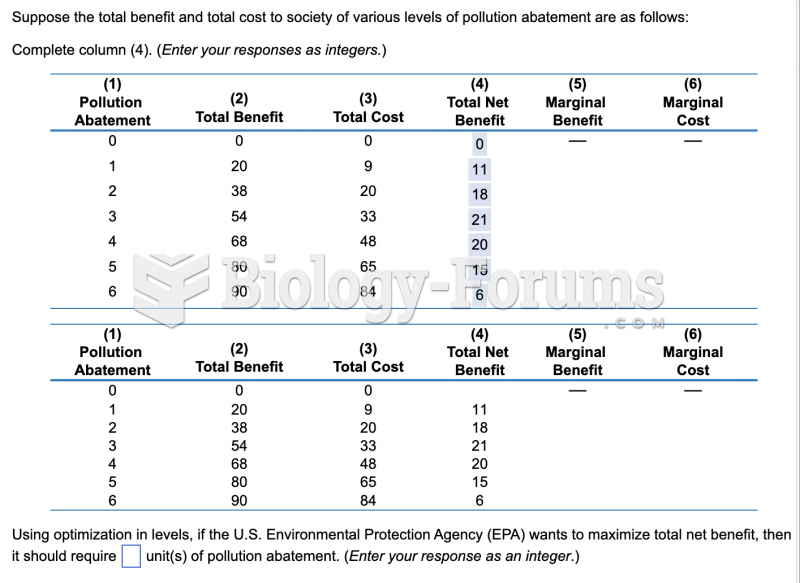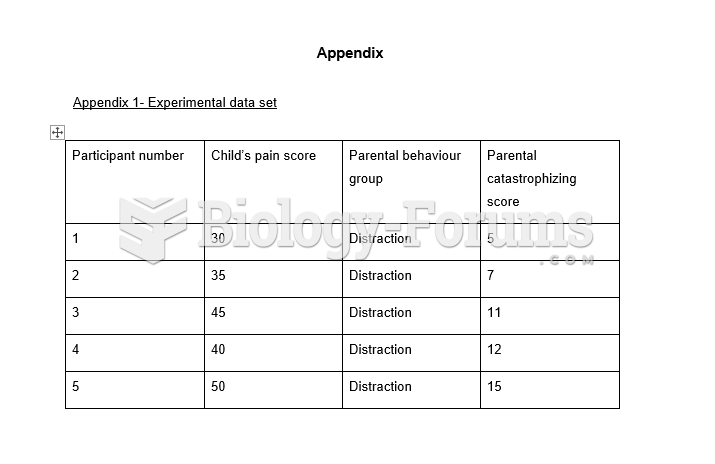|
|
|
The term bacteria was devised in the 19th century by German biologist Ferdinand Cohn. He based it on the Greek word "bakterion" meaning a small rod or staff. Cohn is considered to be the father of modern bacteriology.
Ether was used widely for surgeries but became less popular because of its flammability and its tendency to cause vomiting. In England, it was quickly replaced by chloroform, but this agent caused many deaths and lost popularity.
The heart is located in the center of the chest, with part of it tipped slightly so that it taps against the left side of the chest.
More than 150,000 Americans killed by cardiovascular disease are younger than the age of 65 years.
Earwax has antimicrobial properties that reduce the viability of bacteria and fungus in the human ear.







